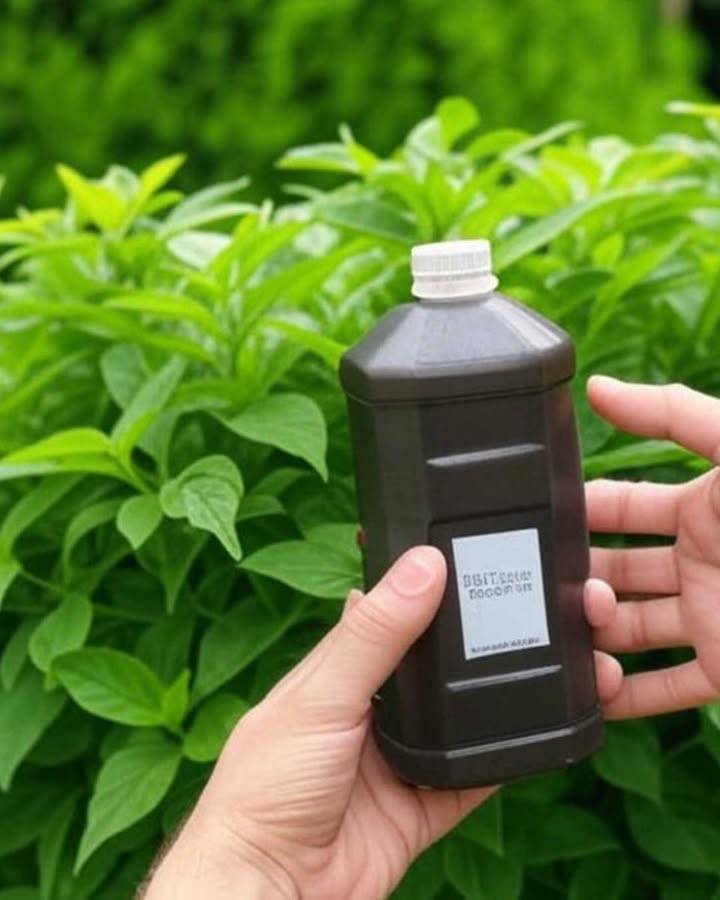ADVERTISEMENT
Hydrogen peroxide, a common household disinfectant, has found its way into the gardening world as a versatile and effective solution for various plant care needs. Its chemical formula, H2O2, closely resembles water, making it a safe and environmentally friendly option for gardeners.
This simple compound can address a wide range of gardening challenges, from disease control to enhancing plant growth, making it an indispensable tool for both novice and experienced gardeners alike.
1. Speed Up Seed Germination
Seeds need oxygen to sprout, and hydrogen peroxide can give them a head start by providing an oxygen boost while softening tough seed coats. This hack is especially useful for older seeds or varieties with hard shells.
Recipe:
Mix 1 teaspoon of 3% hydrogen peroxide with 1 cup of water.
Soak seeds in the solution for 12–24 hours (no longer to avoid damage).
Rinse seeds with plain water, then plant as usual.
Why It Works: The extra oxygen mimics the natural breakdown process, kickstarting germination.
2. Prevent Root Rot
Overwatering can lead to root rot, a common plant killer caused by oxygen-starved roots and fungal growth. Hydrogen peroxide aerates the soil and kills harmful pathogens.
Recipe:
Combine 1 tablespoon of 3% hydrogen peroxide with 1 quart of water.
Water the soil around affected plants, ensuring it soaks into the root zone.
Repeat every 3–5 days until the plant recovers.
Why It Works: The oxygen infusion revives roots, while the antimicrobial properties combat fungi like Pythium.
3. Disinfect Garden Tools
Dirty tools can spread disease between plants. Hydrogen peroxide is a quick, chemical-free way to sterilize pruners, shovels, and pots.
Recipe:
Pour undiluted 3% hydrogen peroxide into a spray bottle.
Spray tools thoroughly or soak small items for 5–10 minutes.
Wipe clean with a cloth or let air dry—no rinsing needed.
Why It Works: It kills bacteria, fungi, and viruses on contact, keeping your garden hygienic.
4. Boost Plant Growth with Oxygenated Water
Plants thrive on oxygen at the root level. Adding hydrogen peroxide to your watering routine mimics the effects of rainwater, which naturally contains H₂O₂.
Recipe:
Mix 1/2 cup of 3% hydrogen peroxide with 1 gallon of water.
Use this solution to water your plants once every 1–2 weeks.
Avoid overdoing it—too much can harm beneficial soil microbes.
Why It Works: The extra oxygen strengthens roots and enhances nutrient uptake.
5. Treat Powdery Mildew
Powdery mildew, that pesky white coating on leaves, can ruin your plants. Hydrogen peroxide acts as a natural fungicide to stop it in its tracks.
Recipe:
Mix 4 teaspoons of 3% hydrogen peroxide with 1 pint of water.
Pour into a spray bottle and mist affected leaves lightly, avoiding drenching.
Apply early in the morning every 2–3 days until the mildew disappears.
Why It Works: It oxidizes fungal spores, halting their spread without harsh chemicals.
6. Repel Pests Naturally
Aphids, spider mites, and other soft-bodied pests hate hydrogen peroxide. It’s a gentle alternative to synthetic pesticides.
Recipe:
Combine 1 tablespoon of 3% hydrogen peroxide, 1 teaspoon of mild liquid soap, and 1 quart of water.
Spray directly on pests, focusing on the undersides of leaves.
Use once a week or after rain until pests are gone.
Why It Works: The solution disrupts pest cell membranes while the soap helps it stick.
7. Clean and Sterilize Pots
Reusing pots without cleaning them can harbor pathogens. Hydrogen peroxide ensures they’re safe for your next planting.
Recipe:
Mix 1 part 3% hydrogen peroxide with 1 part water (e.g., 1 cup each).
Scrub pots with the solution using a brush, then rinse with water.
Let dry completely before reusing.
Why It Works: It eliminates mold, bacteria, and salt buildup from old soil.
8. Improve Compost Aeration
A slow compost pile often lacks oxygen, leading to foul odors. Hydrogen peroxide can speed decomposition and keep things fresh.
Recipe:
Read more on next page
ADVERTISEMENT
